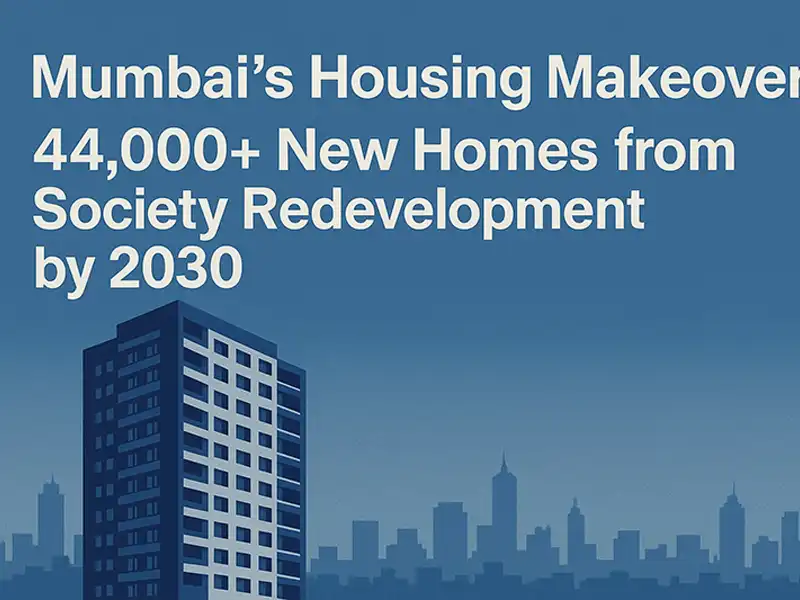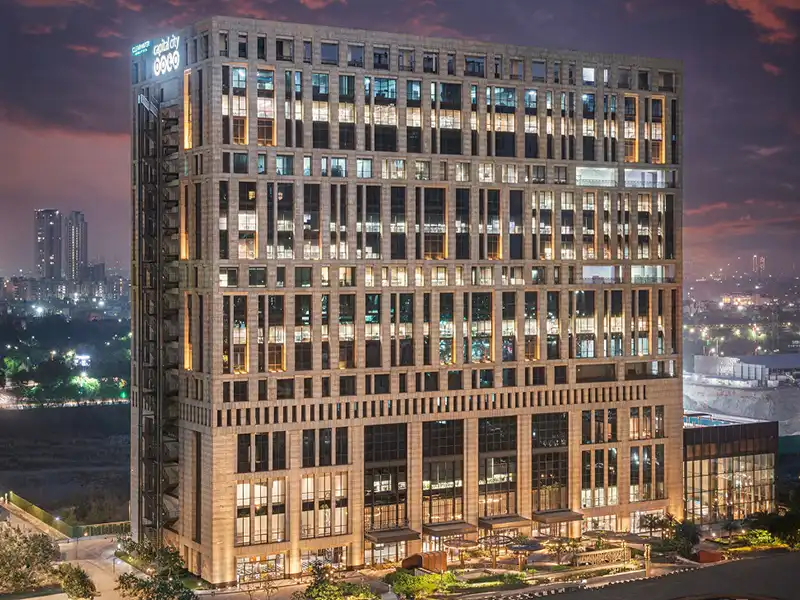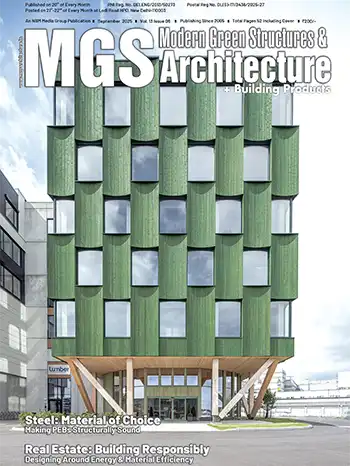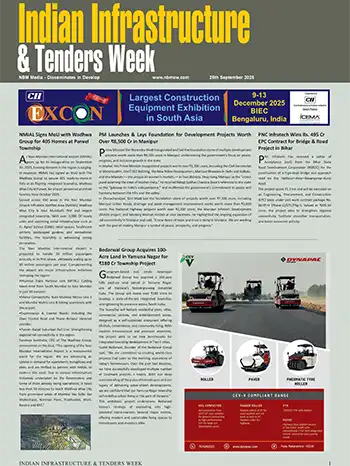Avneesh Sood, Director, Eros Group
To align with India’s goal to achieve net-zero emissions by 2070, many real estate developers like us have devised a comprehensive plan to minimize our carbon footprint and promote sustainable practices throughout our operations. We prioritize the use of eco-friendly construction materials that are energy-efficient and have minimal environmental impact. This includes utilizing recycled materials, incorporating sustainable building techniques, and exploring alternative energy sources such as solar power.
In addition, we emphasize energy-efficient designs in our buildings, incorporating features like improved insulation, energy-efficient appliances, and smart technologies that optimize energy consumption. Furthermore, we actively promote green spaces and integrate nature into our projects by incorporating rooftop gardens, vertical landscaping, and communal green areas. These initiatives not only enhance the aesthetics of our developments but also contribute to carbon sequestration and biodiversity preservation.
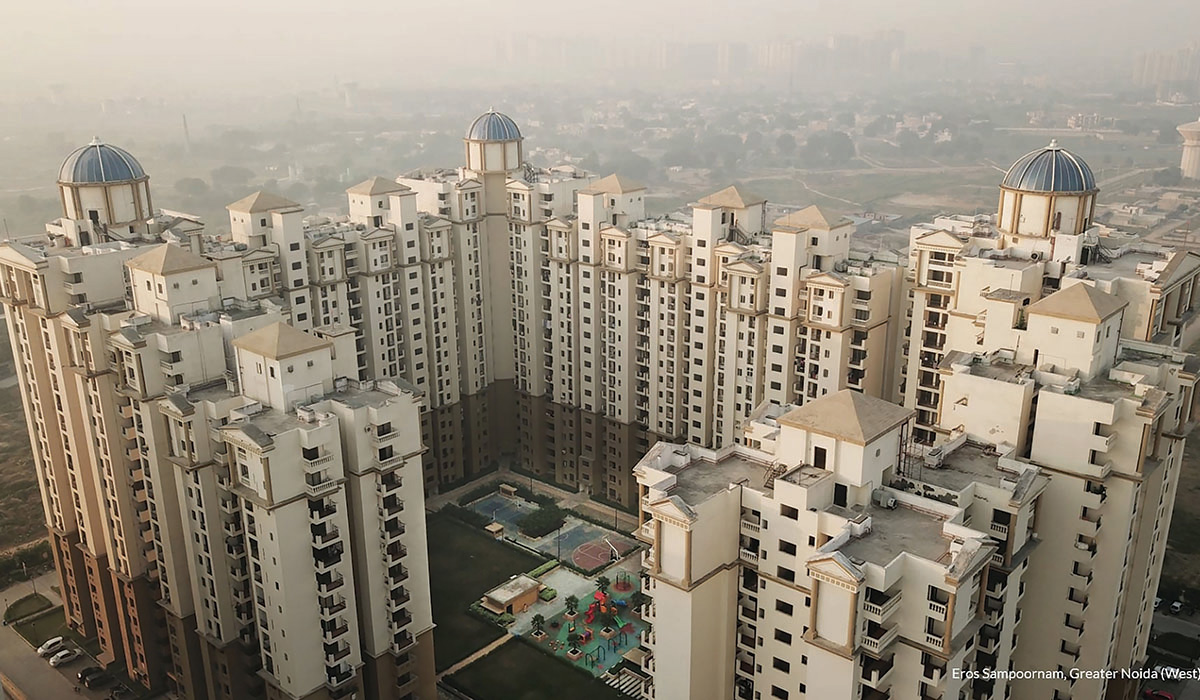
Importance of collaborating with industry
Several construction companies including ours have adopted sustainable practices and technologies, resulting in significant waste reduction and resource conservation. Government initiatives and regulations have also played a crucial role in promoting responsible waste management practices in the sector. We encourage recycling and promote the use of sustainable materials that can be reused or repurposed. We invest in the research and development of innovative construction techniques that reduce emissions during the construction phase. This includes exploring prefabrication methods, off-site construction, and modular designs that minimize waste generation and transportation.We actively collaborate with industry experts, environmental organizations, and government bodies to stay updated on best practices and incorporate them into our operations.
Practices for waste reduction
The real estate and construction industry generate a substantial amount of waste, including construction debris, excavated soil, and packaging materials. However, innovative approaches can be implemented to minimize waste and transform it into valuable resources.One practice that can be adopted is the concept of circular economy, where materials are reused, recycled, or repurposed instead of being discarded. This involves implementing strategies such as salvaging and reusing construction materials, adopting modular construction techniques that allow for disassembly and reuse, and utilizing recycled content in building materials.
Advanced technologies can significantly contribute to waste management in the construction industry. For instance, 3D printing can enable precise construction with minimal material wastage. Building Information Modeling (BIM) technology facilitates efficient planning, reducing the chances of over ordering materials. Onsite waste treatment technologies such as waste sorting and recycling units, can help segregate and process waste effectively.
Partnerships and collaborations within the industry can promote the exchange of waste materials among construction companies, ensuring that waste from one project becomes a valuable resource for another. This can be facilitated through platforms that connect builders, contractors, and suppliers for waste material reuse. It is worth noting that the Indian real estate and construction industry has been making positive strides in waste management.
Carbon credit policy tailored for builders
In view of the significant carbon footprint of the construction industry, there should indeed be a carbon credit policy specifically tailored for our industry. This policy would not only incentivize emission reduction efforts but also encourage the adoption of sustainable practices throughout the construction lifecycle.Construction activities, including material extraction, transportation, and building operations, contribute to a substantial portion of carbon emissions. By implementing a carbon credit policy, we can provide a framework that rewards companies for their efforts in reducing emissions and adopting sustainable practices.
Also, to incentivize emission reduction efforts, the carbon credit policy can offer financial rewards or tradeable credits to construction companies. These incentives can be utilized to support further sustainable initiatives, such as investing in renewable energy sources, implementing energy-efficient technologies, and promoting green building certifications.
Financial institutions can offer support in the form of loans, grants, or investment opportunities, specifically targeting sustainable construction projects and incentivizing companies to reduce their carbon footprint.
Having a centralized body
A centralized body responsible for overseeing and promoting innovations in the industry could play a vital role in fostering collaboration, driving change, and raising awareness about the importance of decarbonization and sustainability. It can facilitate knowledge transfer by organizing conferences, seminars, and workshops on sustainable construction practices, energy-efficient technologies, and green building certifications.By bringing together industry experts, policymakers, researchers, and practitioners, the body can raise awareness about the benefits of decarbonization and sustainability, dispel misconceptions, and inspire industry professionals to embrace innovative solutions. It can also encourage research and development in the construction industry by providing funding, grants, and incentives for projects that promote sustainable practices.
Furthermore, the body can collaborate with government agencies to influence policy decisions and regulations that promote sustainability in the construction sector. By serving as a voice for the industry, it can advocate for supportive policies, tax incentives, and favorable regulations that encourage sustainable construction practices.
We have seen firsthand the positive impact of integrating low-carbon construction methods, not only in reducing environmental footprints but also in enhancing the long-term value and appeal of our developments.
Avneesh Sood
Challenges, opportunities, and initiatives
While transitioning to low-carbon construction methods poses challenges for contractors, it also presents significant opportunities for the industry to contribute to sustainability goals. With awareness, education, supportive policies, and innovative approaches, contractors can successfully implement decarbonization strategies.There is also a growing trend towards sustainable construction practices. The government has introduced initiatives such as the Green Rating for Integrated Habitat Assessment (GRIHA) and the Energy Conservation Building Code (ECBC) to promote energy efficiency and green building practices. These initiatives provide guidance and incentives for contractors to adopt low-carbon construction methods.
Our company has undertaken several initiatives that have effectively reduced carbon emissions. For instance, in a recent residential development, we integrated energy-efficient designs, including enhanced insulation, solar panels for electricity generation, and smart energy management systems. These strategies resulted in a significant reduction in energy consumption and carbon emissions. Another example is a commercial project where we prioritized the use of sustainable materials, such as recycled steel and low-emission concrete. We also incorporated green spaces in our offices to enhance energy efficiency and mitigate the environmental impact.








